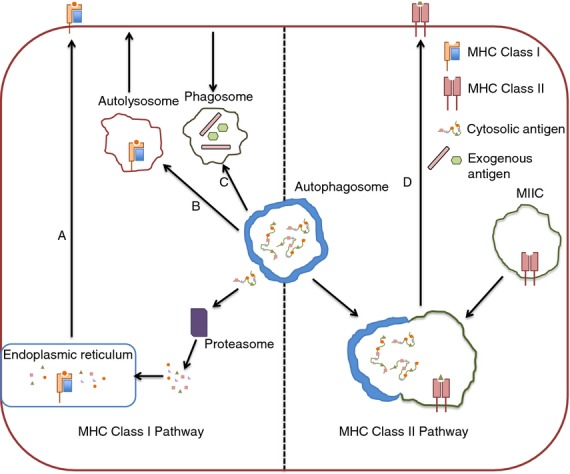Figure 2.

Autophagy and antigen-presenting pathways. The role of autophagy in MHC class I antigen presentation is controversial, but is postulated to occur through a number of potential mechanisms. Antigen may escape from autophagosomes into the cytosol where it can then be processed via the conventional MHC class I pathway that involves degradation by the proteasome before peptide loading in the endoplasmic reticulum (a). MHC class I molecules may also be loaded in autolysosomes themselves before trafficking to the cell surface (b). For cross-presentation, autophagosomes may intersect with phagosomes bearing phagocytosed exogenous antigen that can then be routed into the MHC class I pathway to prime CD8+ T cells (c). During MHC class II presentation, autophagosomes regularly fuse with MHC Class II loading compartments, thereby acting as a system for the delivery of cytosolic antigens to MHC class II molecules (d).
